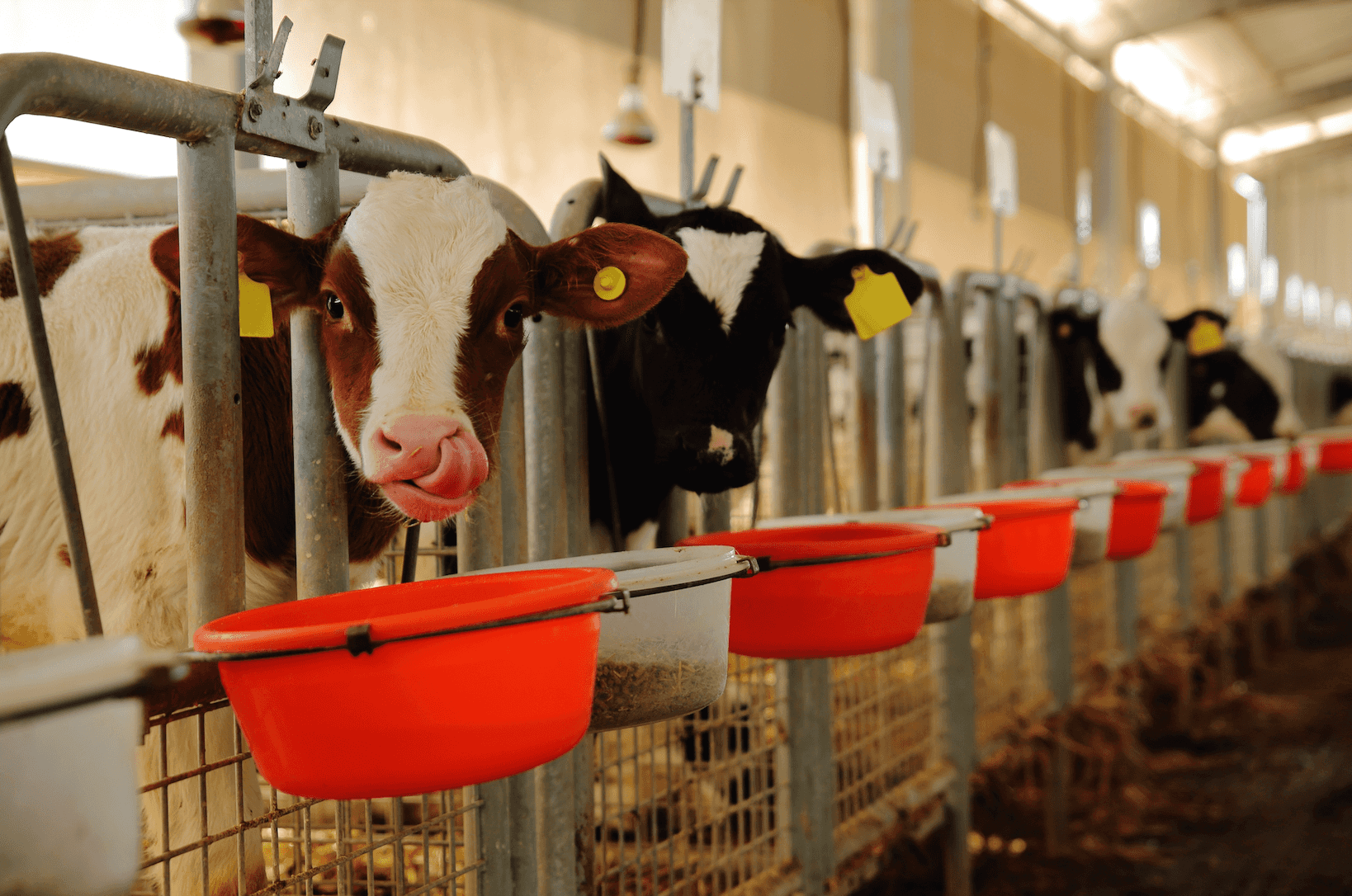
OVC Researchers Aim to Improve Dairy Calf Care and Management
July 03, 2023
New research explores Ontario producers’ use of pain control for disbudding calves
When looking at photographs of cattle, you may notice that some have horns and others do not. While this is sometimes due to the breed and genetics of the specific animal, it is most often because of a common procedure called disbudding.
Most calves are born with two tiny horn buds that are filled with developing cells, which will eventually grow to become full-sized horns. Disbudding calves – or the process of removing those horn-producing cells - is a common and important management practice on beef and dairy farms.
This is because those horns, while seemingly harmless at a young age, will grow to soon pose a potential welfare issue to cattle and safety risk for farmers. Cattle with horns can cause injury to other animals in the herd, severely injure producers and make it more difficult for producers and veterinarians to handle or move those animals.
 “We know that all methods of disbudding cause pain; both acute pain when the horn bud is cauterized and inflammatory pain following the procedure,” says Dr. Charlotte Winder, OVC DVM 2008 and DVSc 2017, and professor in OVC’s Department of Population Medicine. “We know this because multiple studies have demonstrated that markers of pain in calves, such as head shaking and rubbing, or increased heart and respiratory rate, are dramatically reduced when pain control is used.”
“We know that all methods of disbudding cause pain; both acute pain when the horn bud is cauterized and inflammatory pain following the procedure,” says Dr. Charlotte Winder, OVC DVM 2008 and DVSc 2017, and professor in OVC’s Department of Population Medicine. “We know this because multiple studies have demonstrated that markers of pain in calves, such as head shaking and rubbing, or increased heart and respiratory rate, are dramatically reduced when pain control is used.”
Currently, all Canadian dairy producers are required to follow pain control methods as outlined by proAction, a quality assurance program developed by Dairy Farmers of Canada. proAction requires a combination of local anesthetic and an analgesic (non-steroidal anti-inflammatory drug, NSAID) be given prior to disbudding.
Winder explains that this is currently the best practice to control pain associated with disbudding or dehorning.
“The local anesthetic desensitizes the entire horn bud and surrounding area. This ensures that the procedure is not felt by the calf. However, local anesthetics only numb the area for a short time, after which the calves experience inflammatory pain as a response to the tissue damage. When an analgesic is given in addition to the local anesthetic at the time of the procedure, this inflammatory pain is further mitigated.”
As part of her role at OVC, Winder leads research projects that aim to improve health and performance of ruminant species; primarily dairy cattle, sheep and goats.
With a passion for improving dairy calf welfare, Winder took on a recent project exploring Ontario dairy producers' perceived barriers and motivations to using appropriate pain control for disbudding calves.
Supervised by Winder and led by Julia Saraceni, an OVC MSc student, the research team conducted phone interviews with 29 Ontario dairy producers to discuss their procedures and opinions around disbudding calves. All participants used at least one form of pain control in these procedures (i.e., NSAID and/or local anesthetic) and many felt positively about using pain control for these procedures, and 76 per cent of participants used both forms of pain control as outlined by proAction requirements.
“This isn’t an uncommon finding at all – the industry has moved the needle a tremendous amount with respect to pain control, which is fantastic,” Winder explains. “However, having requirements doesn’t always translate to compliance for every person and it is important to understand factors impacting this.”
Interestingly, producers often indicated that their veterinarian was the most important influence in reducing barriers to pain management. Winder believes that “this means producers view their veterinarian as an excellent source of information about best practices with regards to pain control. This makes sense as we have education and training in this area, and it is great to know that producers value our knowledge.”
“However, this also means that it is our responsibility as the veterinarian to have conversations about pain management with our clients. Sometimes we can make assumptions that someone might not be open to information or changing practices, but we don’t really know that until we have that conversation.”
Moving forward, Winder believes that “the best way to continually improve animal welfare is to generate buy-in from producers and staff on farms. Regardless of rules and regulations, if someone is genuinely motivated to do a practice because they feel it is the best, or the ‘right’ thing to do, it’s going to get done day in and day out.”
“The herd veterinarian plays such an important role here, because they are best positioned to understand the individual producers and calf caretakers on the farm. They can tailor their approach to education and training to suit their needs which, I think, is more likely to create a situation where actual buy-in for these best management practices is achieved.”
Click here to read more about this research in the recently published journal article. This project was funded by Dairy Farmers of Ontario and the Ontario Agri-Food Innovation Alliance, a collaboration between the Government of Ontario and the University of Guelph.

.png)